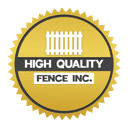Pet-Friendly Gates: Ensuring Safety Of Your Furry Friends
Pets are cherished members of our families, and ensuring their safety and well-being is a top priority for pet owners. One crucial aspect of pet safety is controlling their access to certain areas of the home or property. This is where pet-friendly gates play a crucial role, providing a secure barrier that keeps pets safe while allowing them to roam freely within designated areas. In this blog post, we will explore the importance of pet-friendly gates in ensuring the safety of your furry friends and provide tips for choosing the right gate, installing it properly, and training your pet to use it effectively.
Pet-friendly gates come in various types and styles, including pressure-mounted, hardware-mounted, and freestanding options. The type of gate you choose will depend on factors such as your pet’s size, behavior, and the layout of your home. Proper installation is key to the gate’s effectiveness, as an improperly installed gate can pose safety hazards to both pets and humans. We will discuss the importance of following manufacturer instructions and conducting regular maintenance checks to keep the gate in optimal condition.
Training your pet to use the gate is also essential for ensuring their safety. We will provide tips for introducing your pet to the gate and teaching them to respect its boundaries. Additionally, we will discuss supplementary safety measures, such as pet cameras and GPS trackers, to further enhance your pet’s safety. By following these tips and investing in a suitable pet-friendly gate, you can create a safe and secure environment for your furry friends to enjoy.
Importance Of Pet Safety
Pet safety is a paramount concern for pet owners, as our furry friends are often curious and can get into mischief. Ensuring a safe environment for pets involves not only removing potential hazards but also controlling their access to certain areas. Pet-friendly gates play a crucial role in maintaining a secure environment by creating boundaries and preventing pets from entering potentially dangerous areas such as staircases, kitchens, or rooms with fragile items.
These gates are designed to be sturdy and secure, providing a barrier that is difficult for pets to breach. They are particularly useful for keeping pets safe when owners are not able to supervise them, such as during work hours or at night. Additionally, pet-friendly gates can help with training by establishing boundaries and teaching pets to respect certain areas of the home.
By using pet-friendly gates, pet owners can have peace of mind knowing that their furry friends are safe and secure. These gates provide a simple yet effective solution to ensure the well-being of pets, making them an essential tool for any pet owner concerned about their pet’s safety.

Choosing The Right Gate For Your Pet
When selecting a pet-friendly gate, it’s essential to consider your pet’s size, behavior, and the specific area you want to secure. Here are some key points to keep in mind:
- Type of Gate: There are several types of pet gates available, including pressure-mounted gates, hardware-mounted gates, and freestanding gates.
- Pressure-Mounted Gates: These gates are easy to install and remove, making them ideal for temporary use or in areas where drilling holes is not allowed. However, they may not be suitable for larger or more energetic pets, as they can be pushed down or knocked over.
- Hardware-Mounted Gates: These gates are securely mounted to walls or door frames with screws, providing a sturdy barrier. They are suitable for larger pets or areas where extra security is needed.
- Freestanding Gates: These gates stand on their own and can be placed anywhere without the need for mounting. They are versatile but may not be as sturdy as mounted gates.
- Height and Width: Ensure the gate is tall enough to prevent your pet from jumping over it, especially for larger or more agile pets. Measure the width of the opening you want to block and choose a gate that can span that distance without leaving gaps.
- Material: Look for gates made from durable materials that can withstand your pet’s behavior. Metal gates are often more sturdy than plastic ones and are less likely to be chewed through.
- Accessibility: Consider how easy it is for you to open and close the gate, especially if you will be using it frequently. Look for gates with convenient latches that are secure but easy for you to operate.
- Extra Features: Some gates come with additional features such as pet doors or extensions to accommodate wider openings. These can be useful depending on your needs and the layout of your home.
- Reviews and Recommendations: Before making a purchase, read reviews from other pet owners to get an idea of the gate’s performance and durability. Recommendations from friends or family members who have pets can also be valuable.
By carefully considering these factors, you can choose a pet-friendly gate that provides the security and safety your pet needs while blending seamlessly into your home’s decor.
Installation Tips For Pet Safety
- Choose the Right Location: Place the gate in a doorway or entryway that will effectively contain your pet. Consider the height of the gate to prevent jumping or climbing over.
- Properly Secure the Gate: Follow the manufacturer’s instructions for installation carefully. Use the appropriate mounting hardware for your gate type (pressure-mounted or hardware-mounted) to ensure it is securely attached.
- Check for Stability: Test the gate to ensure it is stable and can withstand your pet’s attempts to push or pull on it. Tighten any screws or bolts if necessary.
- Adjust for Proper Fit: Ensure the gate fits securely in the opening without any gaps that your pet could squeeze through. Use any included extensions to adjust the width if needed.
- Consider Height and Jumping Ability: If you have a larger or more active pet that can jump high, consider installing a taller gate or one with a lock that is out of reach.
- Avoid Sharp Edges or Protrusions: Make sure there are no sharp edges or parts of the gate that could injure your pet.
- Monitor Your Pet’s Behavior: Watch how your pet interacts with the gate after installation to ensure they are not able to escape or injure themselves.
- Regular Maintenance: Periodically check the gate for any signs of wear or damage and replace any parts that are worn out or broken.
Following these installation tips can help ensure that your pet-friendly gate is installed safely and effectively, providing a secure environment for your furry friend.
Gate Maintenance And Safety Checks
- Regular Cleaning: Regularly clean the gate to remove dirt, dust, and pet hair that can accumulate and affect its functionality.
- Check the Latching Mechanism: Ensure that the gate latches securely and that the locking mechanism functions properly. This prevents pets from pushing or nudging the gate open.
- Inspect the Hinges: Check the hinges for any signs of wear or loosening. Tighten any loose screws and lubricate the hinges if necessary to ensure smooth operation.
- Stability Check: Verify that the gate is stable and securely attached to the wall or door frame. A wobbly gate can be easily pushed aside by a determined pet.
- Height Adjustment: If using an adjustable gate, periodically check and adjust the height to accommodate your growing pet or changing needs.
- Look for Sharp Edges or Protrusions: Inspect the gate for any sharp edges or protrusions that could potentially harm your pet. File down or cover these areas to prevent injuries.
- Test the Auto-Close Feature (if applicable): If your gate has an auto-close feature, test it regularly to ensure that it closes properly and securely.
- Monitor for Signs of Wear and Tear: Keep an eye out for any signs of wear and tear, such as cracked or damaged parts. Replace these components promptly to maintain the gate’s effectiveness and safety.
- Check for Pet Escape Routes: Regularly inspect the area around the gate for any gaps or spaces where pets could potentially escape. Make necessary adjustments to close off these gaps.
- Educate Family Members: Ensure that all family members are aware of the importance of keeping the gate closed and secure at all times to prevent pet escapes or accidents.
Including these maintenance and safety checks will help ensure that the pet-friendly gate remains effective in keeping your furry friends safe and secure.
Training Your Pet To Use The Gate
- Positive Reinforcement: Use treats, toys, or verbal praise to reward your pet when they approach or interact with the gate. This positive reinforcement will help them associate the gate with a positive experience.
- Gradual Introduction: Introduce the gate to your pet gradually. Start by allowing them to see and sniff the gate while it’s open. Then, close the gate partially and gradually increase the closure until the gate is fully closed.
- Encouragement and Guidance: Use verbal cues such as “stay” or “wait” to encourage your pet to stay behind the gate. Guide them with gentle nudges or treats to help them understand the boundary.
- Consistency: Be consistent with your training. Use the same cues and rewards each time you practice with the gate. Consistency will help your pet learn the desired behavior faster.
- Practice Makes Perfect: Practice using the gate with your pet regularly. Reinforce the training by rewarding them each time they successfully use the gate as instructed.
- Supervised Training: Initially, supervise your pet when they are near the gate to ensure they are using it correctly. Correct any unwanted behavior promptly and redirect them to the correct use of the gate.
- Patience and Understanding: Every pet learns at their own pace. Be patient and understanding during the training process. If your pet becomes stressed or frustrated, take a break and resume training later.
By following these training tips, you can help your pet learn to use the gate safely and effectively, providing them with a secure environment while giving you peace of mind.
In conclusion, pet-friendly gates are not just a convenience but a necessity for ensuring the safety and well-being of your furry friends. These gates provide a secure barrier that keeps your pets safe within designated areas while also allowing them the freedom to roam and explore safely.
:If you’re considering installing a pet-friendly gate, take the first step towards enhancing the safety of your furry friends today. Explore our range of pet-friendly gate options and give your pets the freedom they deserve, knowing they’re protected and secure.


